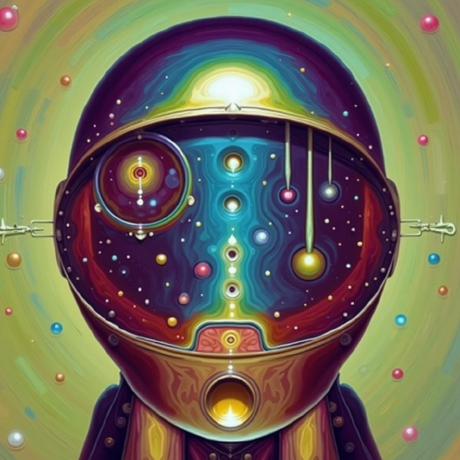CLIP Guided Diffusion
From RiversHaveWings.
Consider using these much faster and more reliable glide/laionide checkpoints:
pyglide or https://replicate.com/afiaka87/pyglide)
laionide or https://replicate.com/afiaka87/laionide)
Don’t close the current tab or switch to e.g. the “Examples” while running. Please be patient and let all runs finish to completion or you could lose the current running instance. Instance cold-boot time can take a few minutes, but subsequent generations should be much faster afterward.
Generation can be somewhat unstable unfortunately and for some captions you may need to tweak the clip_guidance_scale, tv_scale, and range_scale.
Credit for the discovery here goes to the very talented Katherine Crowson. Please reach out to her if you have questions about the base algorithm for the purposes of research. GitHub repository and cog support by Clay Mullis aka afiaka87
Generations will skew heavily towards the distribution of the ImageNet dataset. This tends to mean that captions which are less abstract and lean more towards photo-realism will produce more accurate results. Similarly, any of the specific classes from ImageNet also tend to work very well. Here’s a list
Pasted from GitHub
From RiversHaveWings aka @crowsonkb
A CLI tool/python module for generating images from text using guided diffusion and CLIP from OpenAI.
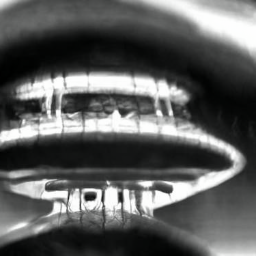
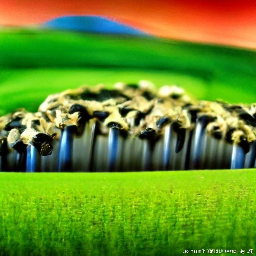
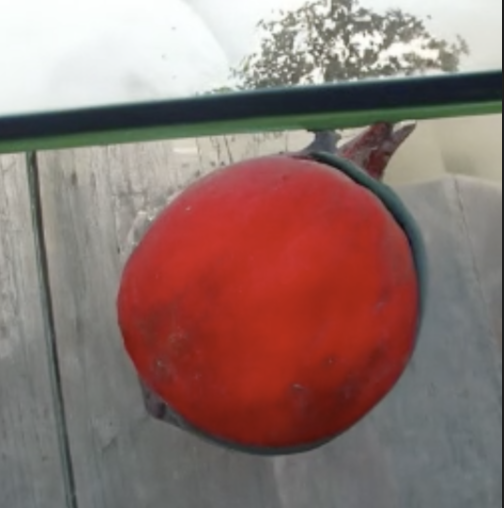
See captions and more generations in the Gallery.
NEW All losses, the current noisy, denoised and blended generations are now logged to Weights & Biases if enabled using:
--wandb_project project_name_here.
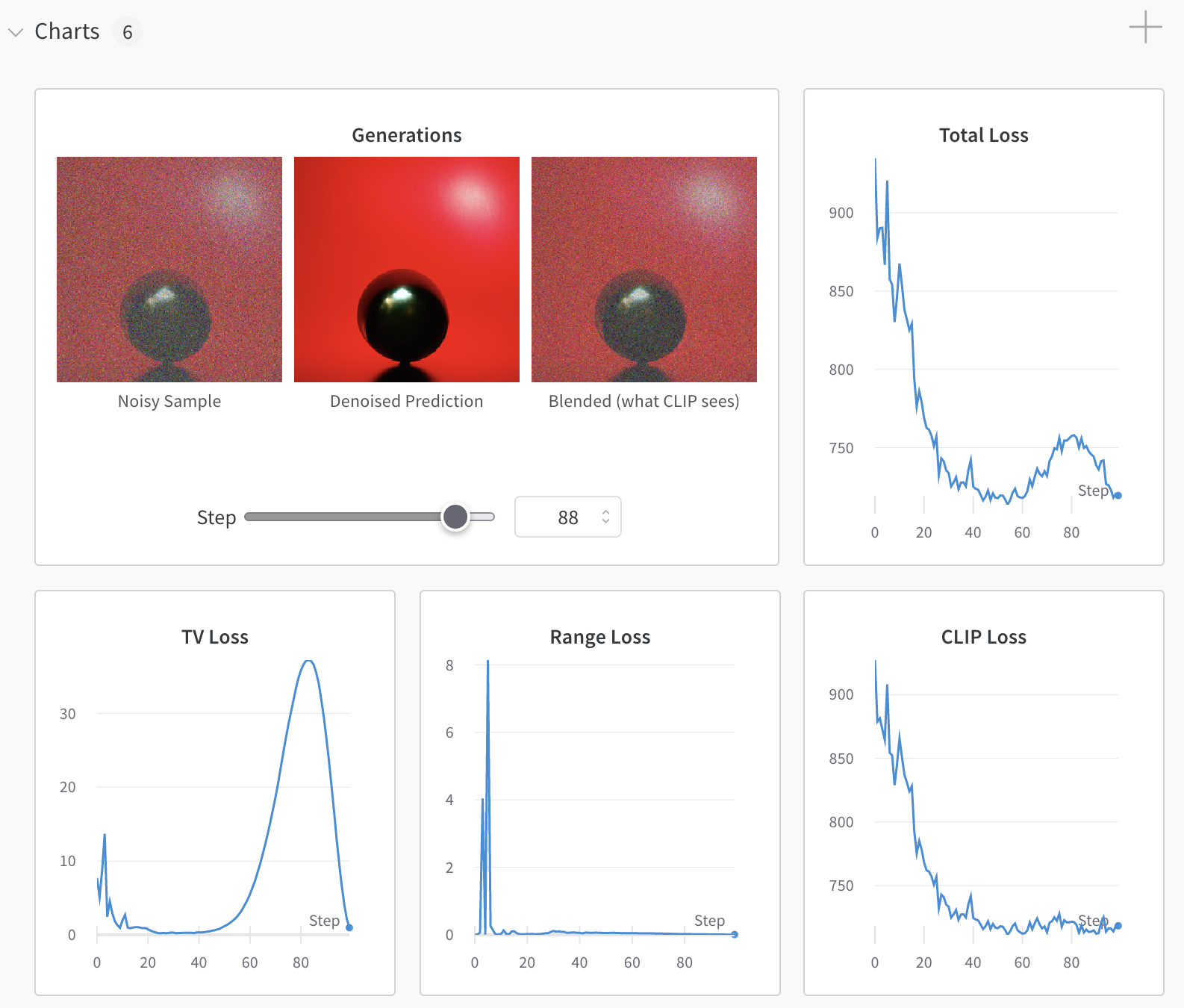
Install
git clone https://github.com/afiaka87/clip-guided-diffusion.git && cd clip-guided-diffusion
git clone https://github.com/crowsonkb/guided-diffusion.git
pip3 install -e guided-diffusion
python3 setup.py install
Run
cgd -txt "Alien friend by Odilon Redo"
A gif of the full run will be saved to ./outputs/caption_{j}.gif by default.

./outputswill contain all intermediate outputscurrent.pngwill contain the current generation.- (optional) Provide
--wandb_project <project_name>to enable logging intermediate outputs to wandb. Requires free account. URL to run will be provided in CLI - example run ~/.cache/clip-guided-diffusion/will contain downloaded checkpoints from OpenAI/Katherine Crowson.
Usage - CLI
Text to image generation
--prompts / -txts
--image_size / -size
cgd --image_size 256 --prompts "32K HUHD Mushroom"
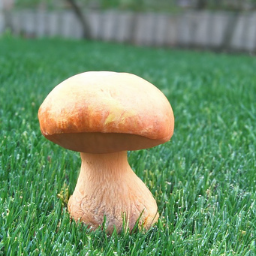
Text to image generation (multiple prompts with weights)
- multiple prompts can be specified with the
|character. - you may optionally specify a weight for each prompt using a
:character. - e.g.
cgd --prompts "Noun to visualize:1.0|style:0.1|location:0.1|something you dont want:-0.1" - weights must not sum to 0
cgd -txt "32K HUHD Mushroom|Green grass:-0.1"
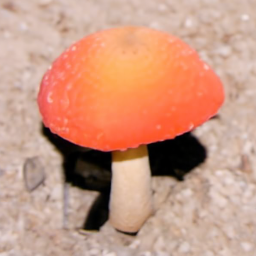
CPU
- Using a CPU will take a very long time compared to using a GPU.
cgd --device cpu --prompt "Some text to be generated"
CUDA GPU
cgd --prompt "Theres no need to specify a device, it will be chosen automatically"
Iterations/Steps (Timestep Respacing)
--timestep_respacing or -respace (default: 1000)
- Uses fewer timesteps over the same diffusion schedule. Sacrifices accuracy/alignment for quicker runtime.
- options: -
25,50,150,250,500,1000,ddim25,ddim50,ddim150,ddim250,ddim500,ddim1000 - (default:
1000) - prepending a number with
ddimwill use the ddim scheduler. e.g.ddim25will use the 25 timstep ddim scheduler. This method may be better at shorter timestep_respacing values.
Existing image
--init_image/-init
- Blend an image with the diffusion for a number of steps.
--skip_timesteps/-skip
The number of timesteps to spend blending the image with the guided-diffusion samples.
Must be less than --timestep_respacing and greater than 0.
Good values using timestep_respacing of 1000 are 250 to 500.
-respace 1000 -skip 500-respace 500 -skip 250-respace 250 -skip 125-respace 125 -skip 75
(optional)--init_scale/-is
To enable a VGG perceptual loss after the blending, you must specify an --init_scale value. 1000 seems to work well.
cgd --prompts "A mushroom in the style of Vincent Van Gogh" \
--timestep_respacing 1000 \
--init_image "images/32K_HUHD_Mushroom.png" \
--init_scale 1000 \
--skip_timesteps 350
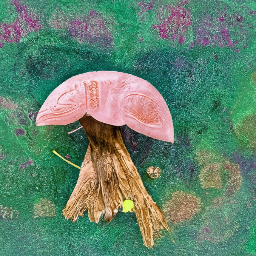
Image size
- options:
64, 128, 256, 512 pixels (square) - Note about 64x64 when using the 64x64 checkpoint, the cosine noise scheduler is used. For unclear reasons, this noise scheduler requires different values for
--clip_guidance_scaleand--tv_scale. I recommend starting with-cgs 5 -tvs 0.00001and experimenting from around there.--clip_guidance_scaleand--tv_scalewill require experimentation. - For all other checkpoints, clip_guidance_scale seems to work well around 1000-2000 and tv_scale at 0, 100, 150 or 200
cgd --init_image=images/32K_HUHD_Mushroom.png \
--skip_timesteps=500 \
--image_size 64 \
--prompt "8K HUHD Mushroom"
 resized to 200 pixels for visibility
resized to 200 pixels for visibility
cgd --image_size 512 --prompt "8K HUHD Mushroom"
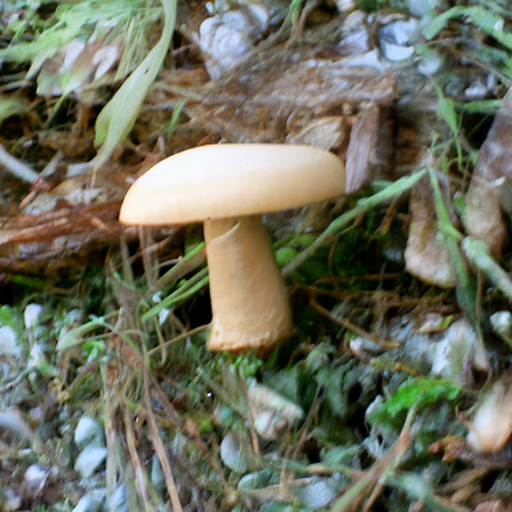
Usage - Python
# Initialize diffusion generator
from cgd import clip_guided_diffusion
import cgd_util
cgd_generator = clip_guided_diffusion(
prompts=["an image of a fox in a forest"],
image_prompts=["image_to_compare_with_clip.png"],
batch_size=1,
clip_guidance_scale=1500,
sat_scale=0,
tv_scale=150,
init_scale=1000,
range_scale=50,
image_size=256,
class_cond=False,
randomize_class=False, # only works with class conditioned checkpoints
cutout_power=1.0,
num_cutouts=16,
timestep_respacing="1000",
seed=0,
diffusion_steps=1000, # dont change this
skip_timesteps=400,
init_image="image_to_blend_and_compare_with_vgg.png",
clip_model_name="ViT-B/16",
dropout=0.0,
device="cuda",
prefix_path="store_images/",
wandb_project=None,
wandb_entity=None,
progress=True,
)
prefix_path.mkdir(exist_ok=True)
list(enumerate(tqdm(cgd_generator))) # iterate over generator
Full Usage
usage: cgd [-h] [--prompts PROMPTS] [--image_prompts IMAGE_PROMPTS]
[--image_size IMAGE_SIZE] [--init_image INIT_IMAGE]
[--init_scale INIT_SCALE] [--skip_timesteps SKIP_TIMESTEPS]
[--prefix PREFIX] [--checkpoints_dir CHECKPOINTS_DIR]
[--batch_size BATCH_SIZE]
[--clip_guidance_scale CLIP_GUIDANCE_SCALE] [--tv_scale TV_SCALE]
[--range_scale RANGE_SCALE] [--sat_scale SAT_SCALE] [--seed SEED]
[--save_frequency SAVE_FREQUENCY]
[--diffusion_steps DIFFUSION_STEPS]
[--timestep_respacing TIMESTEP_RESPACING]
[--num_cutouts NUM_CUTOUTS] [--cutout_power CUTOUT_POWER]
[--clip_model CLIP_MODEL] [--uncond]
[--noise_schedule NOISE_SCHEDULE] [--dropout DROPOUT]
[--device DEVICE] [--wandb_project WANDB_PROJECT]
[--wandb_entity WANDB_ENTITY] [--quiet]
optional arguments:
-h, --help show this help message and exit
--prompts PROMPTS, -txts PROMPTS
the prompt/s to reward paired with weights. e.g. 'My
text:0.5|Other text:-0.5' (default: )
--image_prompts IMAGE_PROMPTS, -imgs IMAGE_PROMPTS
the image prompt/s to reward paired with weights. e.g.
'img1.png:0.5,img2.png:-0.5' (default: )
--image_size IMAGE_SIZE, -size IMAGE_SIZE
Diffusion image size. Must be one of [64, 128, 256,
512]. (default: 128)
--init_image INIT_IMAGE, -init INIT_IMAGE
Blend an image with diffusion for n steps (default: )
--init_scale INIT_SCALE, -is INIT_SCALE
(optional) Perceptual loss scale for init image.
(default: 0)
--skip_timesteps SKIP_TIMESTEPS, -skip SKIP_TIMESTEPS
Number of timesteps to blend image for. CLIP guidance
occurs after this. (default: 0)
--prefix PREFIX, -dir PREFIX
output directory (default: outputs)
--checkpoints_dir CHECKPOINTS_DIR, -ckpts CHECKPOINTS_DIR
Path subdirectory containing checkpoints. (default:
/home/samsepiol/.cache/clip-guided-diffusion)
--batch_size BATCH_SIZE, -bs BATCH_SIZE
the batch size (default: 1)
--clip_guidance_scale CLIP_GUIDANCE_SCALE, -cgs CLIP_GUIDANCE_SCALE
Scale for CLIP spherical distance loss. Values will
need tinkering for different settings. (default: 1000)
--tv_scale TV_SCALE, -tvs TV_SCALE
Controls the smoothness of the final output. (default:
150.0)
--range_scale RANGE_SCALE, -rs RANGE_SCALE
Controls how far out of RGB range values may get.
(default: 50.0)
--sat_scale SAT_SCALE, -sats SAT_SCALE
Controls how much saturation is allowed. Used for
ddim. From @nshepperd. (default: 0.0)
--seed SEED, -seed SEED
Random number seed (default: 0)
--save_frequency SAVE_FREQUENCY, -freq SAVE_FREQUENCY
Save frequency (default: 1)
--diffusion_steps DIFFUSION_STEPS, -steps DIFFUSION_STEPS
Diffusion steps (default: 1000)
--timestep_respacing TIMESTEP_RESPACING, -respace TIMESTEP_RESPACING
Timestep respacing (default: 1000)
--num_cutouts NUM_CUTOUTS, -cutn NUM_CUTOUTS
Number of randomly cut patches to distort from
diffusion. (default: 16)
--cutout_power CUTOUT_POWER, -cutpow CUTOUT_POWER
Cutout size power (default: 1.0)
--clip_model CLIP_MODEL, -clip CLIP_MODEL
clip model name. Should be one of: ('ViT-B/16',
'ViT-B/32', 'RN50', 'RN101', 'RN50x4', 'RN50x16') or a
checkpoint filename ending in `.pt` (default:
ViT-B/32)
--uncond, -uncond Use finetuned unconditional checkpoints from OpenAI
(256px) and Katherine Crowson (512px) (default: False)
--noise_schedule NOISE_SCHEDULE, -sched NOISE_SCHEDULE
Specify noise schedule. Either 'linear' or 'cosine'.
(default: linear)
--dropout DROPOUT, -drop DROPOUT
Amount of dropout to apply. (default: 0.0)
--device DEVICE, -dev DEVICE
Device to use. Either cpu or cuda. (default: )
--wandb_project WANDB_PROJECT, -proj WANDB_PROJECT
Name W&B will use when saving results. e.g.
`--wandb_name "my_project"` (default: None)
--wandb_entity WANDB_ENTITY, -ent WANDB_ENTITY
(optional) Name of W&B team/entity to log to.
(default: None)
--quiet, -q Suppress output. (default: False)
Development
git clone https://github.com/afiaka87/clip-guided-diffusion.git
cd clip-guided-diffusion
git clone https://github.com/afiaka87/guided-diffusion.git
python3 -m venv cgd_venv
source cgd_venv/bin/activate
pip install -r requirements.txt
pip install -e guided-diffusion
Run integration tests
- Some tests require a GPU; you may ignore them if you dont have one.
python -m unittest discover
